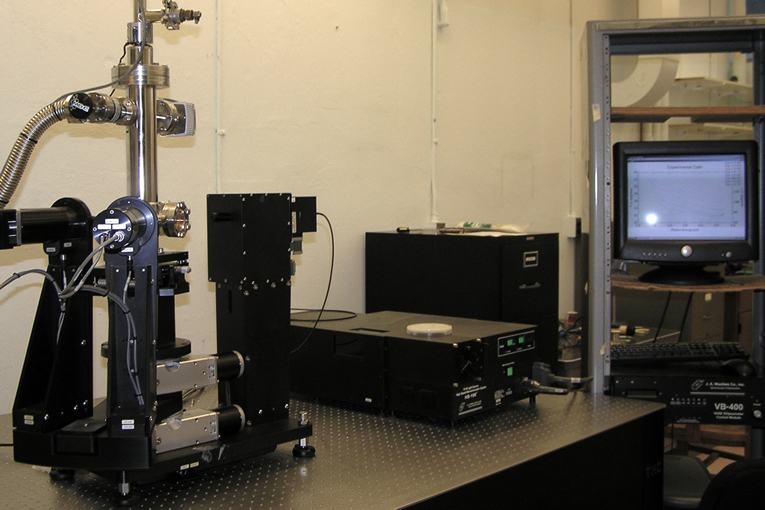Ellipsometry

Ellipsometry was first invented by P. Drude to test his theory of metals. Light from a monochrometer is pased through a fixed polarizer and compensator, reflected at a finite angle off the sample, passed through a second rotating polarizer and finally the intensity is measured as a function of time by a detector. From the Fourier transform one derives changes in the relative amplitude and phase between light polarized in the plane of incidence and normal to it. From this data one can determine the optical constants, surface roughness, oxide layer thickness as well as optical anisotropy. Our instrument, a Woollam Inc VB-400 VASE operates from 0.5eV (4030 cm-1) to 5.5 eV (44,300 cm-1) with 1 meV resolution (8 cm-1) and samples can be measured from 4 K to 420 K in ultrahigh vacuum (10-9 mBarr).
